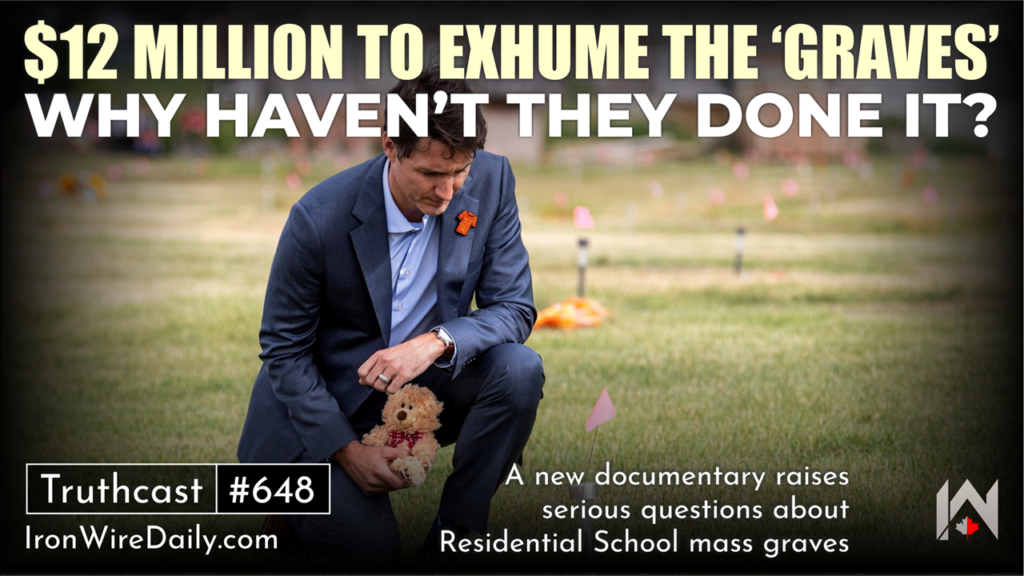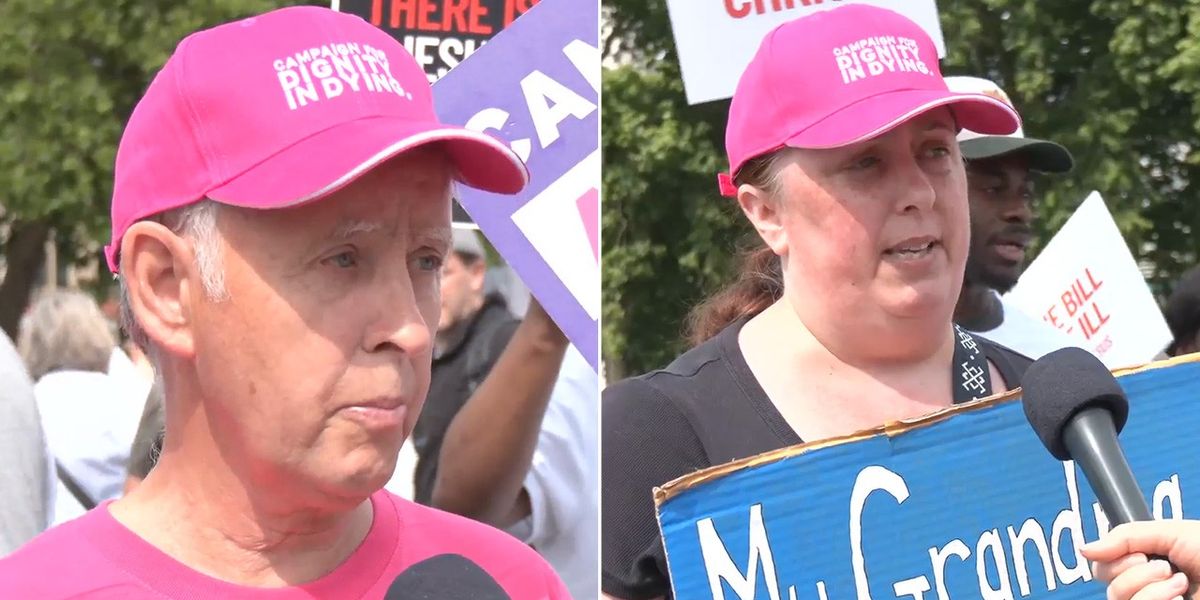Why Trump‘s ‘Gold Standard’ Executive Order is Essential to Restoring Truth in Science

President Donald Trump signed an executive order titled ‘Restoring Gold Standard Science’ on May 23rd 2025, aiming to overhaul research-integrity policies and ensure that federal government-sponsored science is “transparent, rigorous and impactful”. The order sparked concern among scientists who fear it could lead to political interference in scientific research and undermine independent scientific inquiry.
Thus, STAT News – owned by Boston Globe Media, operating as a for-profit media outlet focused on health, medicine and life sciences and funded by Big Pharma and biotech firm ads – claimed that “Trump’s ‘gold standard’ order is a blueprint for politicising science”. According to the New York Times, the executive order puts Trump’s political appointees in charge of vetting scientific research and gives them the authority to “correct scientific information”, control the way it is communicated to the public and the power to “discipline” anyone who violates the way the administration views science.
In an open letter boasting 9,700 signatures (of which 2,700 chose to keep their information private), a group called ‘Stand Up for Science‘ compared President Trump’s executive order to the Lysenko affair – which condemned millions to starvation by conducting bogus genetic research in the Soviet Union – and the ‘science’ of eugenics in state-sponsored programmes in Nazi Germany which led to the genocide of millions of Jews, people with disabilities and homosexuals.
In the no-holds-barred confrontation between President Trump and his detractors, starting even before his first term in office, comparing him to Hitler and Stalin is par for the course and should elicit no surprises among observers. But in a hyperbolic and highly charged political climate, President Trump’s latest executive order may go down as one of the most consequential policy interventions in defence of scientific integrity.
It does not seek to suppress speech, cancel dissidents or blacklist platforms. It does something far more radical: it demands that science — particularly in contested domains like climate change and public health — return to first principles. It insists that government-funded science must meet the highest standards of evidence, transparency and falsifiability. That’s not censorship; it’s scientific sobriety.
Far from undermining science, this order represents a necessary corrective to the pervasive problem of regulatory capture – the process by which regulatory agencies become dominated by the interests of those they are charged with regulating, rather than the public interest. As George Stigler, the Nobel laureate economist, argued in his seminal work on regulatory capture, bureaucracies often serve the interests of the regulated rather than the public good. In areas like climate and health policy, this dynamic has fuelled propaganda masquerading as science, necessitating a return to the philosopher Karl Popper’s gold standard of falsifiability to restore trust and integrity.
The Crisis of Trust in Science
Public trust in science has plummeted in recent years, and for good reason. The executive order cites a “reproducibility crisis” as evidence of a broader malaise. The crisis, also known as the replication or replicability crisis, refers to the growing number of published scientific results that other researchers have been unable to reproduce or verify. Because the reproducibility of empirical results is an essential part of the scientific method, such failures undermine the credibility of theories that build on them and can call into question substantial parts of scientific knowledge.
A 2023 survey by the Pew Research Centre finds the share of Americans who say science has had a mostly positive effect on society has fallen and there’s been a continued decline in public trust in scientists. Overall, 57% of Americans say science has had a mostly positive effect on society, down 16 points since before the start of the coronavirus outbreak. This erosion stems from repeated instances where scientific claims, particularly in climate and health, have been manipulated to serve political ends.
The executive order highlights examples from the Biden administration, such as the Centres for Disease Control and Prevention’s (CDC) COVID-19 school-reopening guidance, which was edited by the American Federation of Teachers to discourage in-person learning, leading to detrimental educational outcomes. Through emails obtained under the Freedom of Information Act, the backroom dealings between a powerful government agency and a powerful public sector labour union was exposed by the New York Post.
Regulatory Capture and the Corruption of Science
This example of the corruption of science by regulatory capture crisis is not merely anecdotal. The National Association of Scholars (NAS) notes that the federal government, as the world’s largest funder of scientific research, has “supercharged” the reproducibility crisis by subsidising studies which support reigning narratives, allowing activist bureaucrats to commission research that justifies radical regulations. The result is a scientific ecosystem where truth is subordinated to power, as Stigler’s theory of regulatory capture predicts. When agencies like the Environmental Protection Agency (EPA) or the National Institutes of Health (NIH) align with corporate, academic or ideological interests, the public suffers.
Regulatory agencies such as the CDC, over time, come to serve the interests of the industries or groups they regulate rather than the public. This dynamic is evident in climate and health policy, where entrenched interests — be they green energy corporations, pharmaceutical giants or activist scientists — shape narratives to secure funding, influence policy or maintain power. In climate science, for instance, the Intergovernmental Panel on Climate Change (IPCC) and its associated models have been criticised for exaggerating catastrophic scenarios to justify sweeping economic interventions. Dr John Clauser, the 2022 Nobel Physics Laureate, has called the climate emergency narrative a “dangerous corruption of science” that threatens global economies and billions of lives.
Clauser’s critique, echoed by other Nobel laureates like Ivar Giaever and Robert Laughlin, points to the pseudoscientific nature of much climate research. He argues that climate models, which underpin global policy, are based on flawed assumptions and fail to account for natural forces like cloud cover, which he estimates is underestimated by a factor of 100 to 200. These models, far from being falsifiable, are often treated as sacrosanct, with dissenters silenced, as Clauser himself experienced when his IMF talk was abruptly cancelled after he challenged the climate crisis narrative. This is a textbook case of regulatory capture, where the scientific or policy establishments, funded by government grants, suppresses alternative viewpoints to maintain grip on policies preferred by favoured constituencies.
In health policy, the ‘noble lie’ has become a disturbing justification for scientific misconduct. Some activist scientists argue that exaggerating risks or suppressing inconvenient data is acceptable if it ensures public compliance with policies they deem necessary. This was evident during the COVID-19 pandemic when public health officials, backed by pharmaceutical interests, downplayed uncertainties in public health science to push universal mandates. For instance, throughout much of 2020-2022, the CDC and NIH largely ignored or minimised the protective effect of natural immunity from prior infection.
Karl Popper’s Gold Standard: Falsifiability as the Antidote
The antidote to this corruption lies in returning to Karl Popper’s philosophy of science, which defines the gold standard as falsifiability. Popper argued that for a hypothesis to be scientific, it must be testable and capable of being proven false through empirical observation. Popper’s approach demands scepticism and transparency, rejecting claims that cannot be rigorously tested. President Trump’s executive order explicitly embraces this standard, defining “Gold Standard Science” as research that is reproducible, transparent, falsifiable, subject to unbiased peer review and free from conflicts of interest.
In climate science, for example, the IPCC’s reliance on models that continually predict higher temperatures beyond those empirically observed violates Popper’s criterion. Modern doomsayers have been predicting climate and environmental disaster since the 1960s. They continue to do so today. Of course, none of the apocalyptic predictions with due dates as of today have come true. Similarly, in health policy, the refusal to engage with data on vaccine side effects or alternative treatments during COVID-19 reflects a rejection of falsifiability in favour of dogma.
The National Association of Scholars endorses the executive order for committing federal policy to countering the reproducibility crisis, noting that it “places the weight of the federal government on the side of ensuring that scientific research provides true knowledge about the natural world”. By requiring agencies to adopt policies that prioritise falsifiability and transparency, the order aims to dismantle the structures that enable regulatory capture. This is a direct challenge to the entrenched interests — green energy firms, Big Pharma, academic institutions and activist scientists — who benefit from a system that rewards conformity over truth.
Critics of the executive order claim that the order ‘hijacks’ scientific language to undermine rigour. These critics, however, ignore the irony: their defence of the status quo protects a system already captured by ideological and corporate interests. The fear of ‘political interference’ is a red herring when the current system already allows bureaucrats and special interests to manipulate science for their gain. Stigler’s insight reminds us that regulatory capture thrives in the absence of accountability, and the order’s emphasis on transparency and falsifiability is a direct counter to this. The politicised role of state agencies such as the Environmental Protection Agency, the Department of Energy and the Department of Interior in pushing the Biden administration’s green agenda has been widely noted in these pages and elsewhere.
Compare the Situation with the EU
It is instructive to briefly compare President Trump’s efforts at inculcating gold standard science in government-sponsored research with the situation in the Europe Union. Under Ursula von der Leyen’s leadership, the Digital Services Act (DSA), Digital Markets Act (DMA) and AI Act collectively enable the EU Commission to police content on social media platforms like X and TikTok. Posts that contradict ‘authoritative sources’ on issues like climate, COVID-19 or energy transition can be algorithmically demoted, removed or even criminally sanctioned by the EU’s digital commissars.
Von der Leyen defends these draconian steps as necessary to combat disinformation — but what she’s really fighting is narrative pluralism in the marketplace of ideas, since the science is already ‘settled’. A particularly egregious example of the authoritarian approach to the ‘settled science’ was exhibited by the often grinning Jacinda Ardern, who claimed before stepping down as New Zealand’s Prime Minister that her government was the “sole source of truth” in public health issues during the Covid lockdowns. She naturally got rewarded for her Covid response, first with a damehood awarded by Prince William during a ceremony in the UK and then by the United Nations as the ‘Champion for Global Change’ which recognises “extraordinary individuals and organisations whose work embodies the values and purposes of the UN”.
Conclusion: Speaking Truth to Power
President Trump’s executive order on “Gold Standard Science” is not an attack on science but a defence of its core principles. By anchoring federal policy in making scientific research reproducible, transparent and falsifiable, it seeks to liberate science from the clutches of regulatory capture. The order confronts a scientific establishment that, in areas like climate and health, has too often justified policies that serve vested interests over the public good. As scientists such as John Clauser and others have shown, the cost of this corruption is not just economic but existential, threatening the credibility of science itself.
The path forward is clear: federal agencies must adopt rigorous, transparent and falsifiable standards to ensure that science serves truth, not power. Critics may decry the order as political overreach, but their protests defend a system that has already been politicised by entrenched interests. For the sake of the public, the economy and the integrity of science, Trump’s executive order is a necessary step toward restoring trust and accountability. Let us hope it marks the beginning of a new era where science is once again a beacon of truth, not a tool of propaganda.
Dr Tilak K. Doshi is the Daily Sceptic‘s Energy Editor. He is an economist, a member of the CO2 Coalition and a former contributor to Forbes. Follow him on Substack and X.













